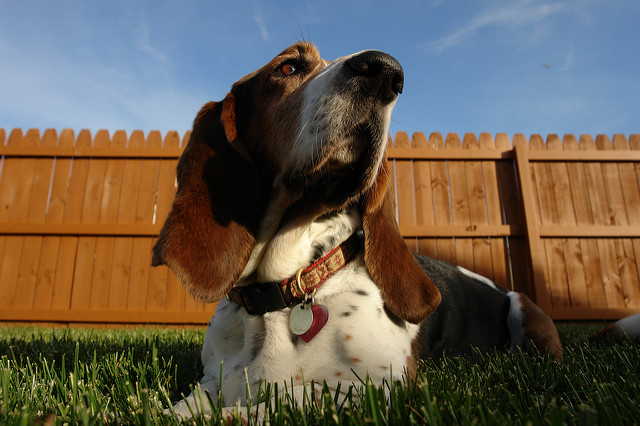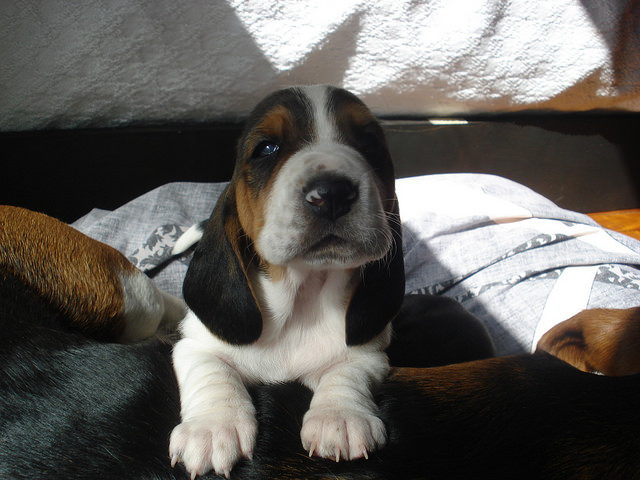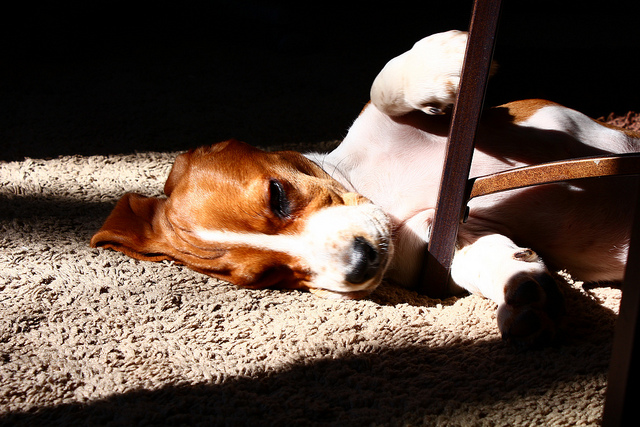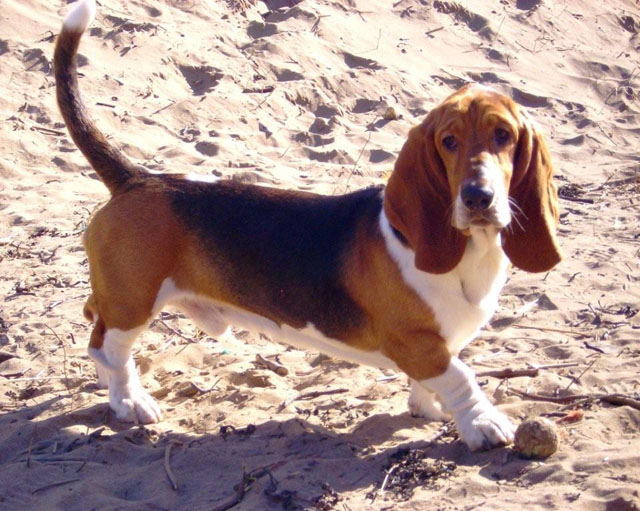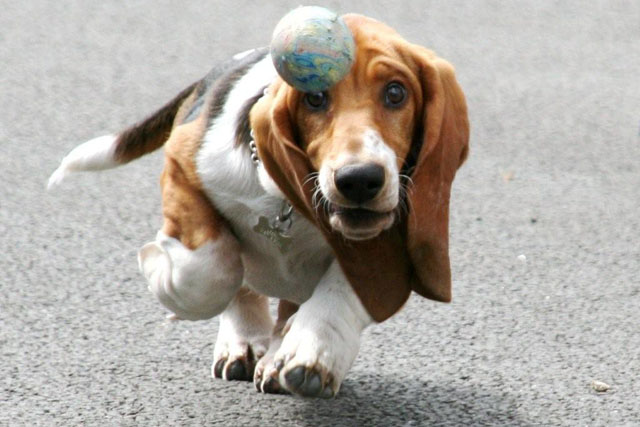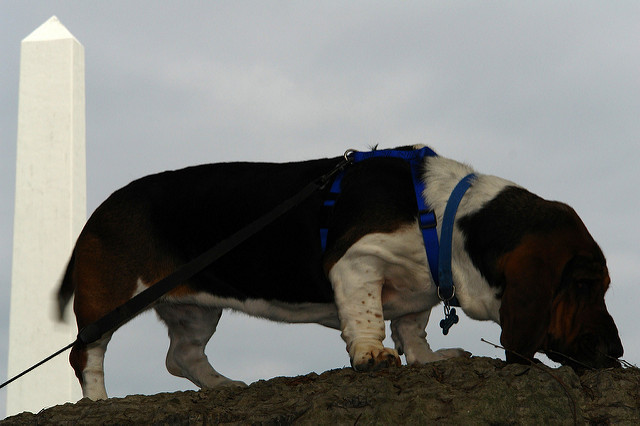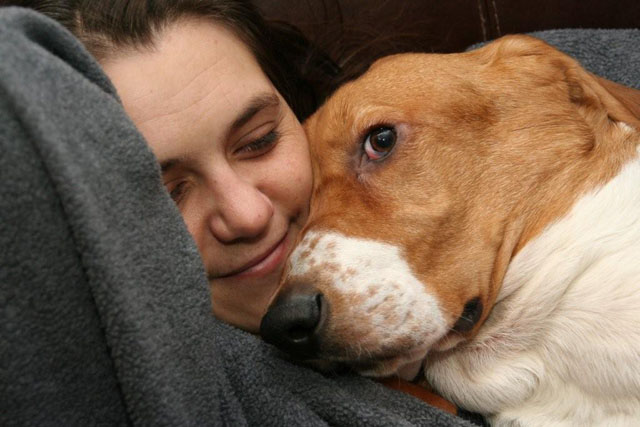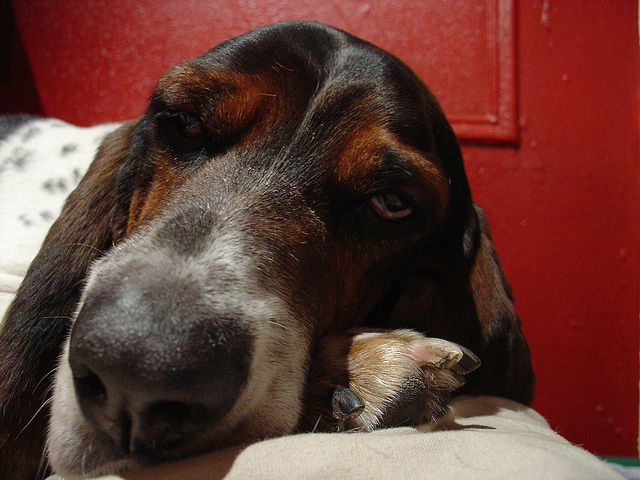Often called the Basset or the Badger Dog, the Basset Hound is a very old breed that is extremely well known. These dogs are distinctive in appearance, kind, and gentle, and they’re also known as affectionate, loyal pets. A member of the Hound Group, the Basset Hound features a long low body and brown eyes that will steal your heart. While they are small, they have one of the best noses of all the hounds. Basset Hounds are very friendly, but they are also polite and solemn and do not get overly excited. Here’s a helpful look at their temperament, grooming needs, health, and other essential information for new owners.
Origin and History
Basset Hounds trace back to France, where Friars from the Abbey of St. Hubert developed the breed in the 1500s. Their goal was to develop an intelligent, slow moving, low set hound that could easily be followed by hunters on foot. The breed was bred to track deer, squirrels, rabbits, pheasants, and fox with their sense of smell. They eventually would even hunt for larger animals, such as wolves and wild boar. Since French royalty enjoyed hunting in the 16th through 19th centuries, nobility and aristocrats favored this breed. However, commoners also favored Basset Hounds.
Two different breeders were breeding two slightly different types of Basset Hounds in the mid-19th century. Count Le Couteulx bred hounds that had soft, sunken eyes, domed to skulls, and a narrower head. They had more exaggerated facial expressions and a jaw that was more prominent. These hounds were tri-colored as well, which made them easy to recognize and very popular. M. Lane bred hounds that had round, prominent eyes, broad skulls, and shorter ears. These dogs were usually white and lemon in color.
It’s thought that George Washington owned one of the very first Basset Hounds to come to the United States. In the 1880s, the import of these dogs resulted in the popularity of the breed within the United States, especially among hunters. In 1885, the AKC first recognized the Basset Hound and the breed continues to be a popular one today.
Appearance
The Basset Hound looks a bit like a smaller, squished version of the Bloodhound. They have heavy bones, long bodies, and short legs. Their heads are large, the skull is round, and their muzzle is wide and long. Basset Hounds have velvety, long ears, and their tail is long and should be carried high. This breed has very large feet and they have loose skin that lies in folds around the face and head. These dogs are also known for their deliberate movements and their sad, soulful, brown eyes.
Since the skin is very elastic, the Basset Hound has a bit of a droopy appearance. They have very short hair that lies flat against their body. Their weather resistant coat sheds only lightly throughout the year, but it’s easy to control. All hound colors are allowed in the Basset Hound, but the most common colors include brown and white, red and white, black and white, and tri color, which is white, black, and tan. Very rarely, a lemon and white Basset may be seen and this color is acceptable by AKC standards.
Basset Hounds are quite short and are usually only between 11 and 14 inches high at their shoulder. However, they are sturdy and long and usually weigh between 45 and 65 pounds as adults.
Basset Hound Temperament
Although the Basset Hound has a look that makes them look sad, they are actually very loyal, affectionate, and active. They have a pack nature, which means they do well with other pets and people, making them wonderful companions for families. They enjoy relaxing, yet they will also appreciate some time playing with the kids. Basset Hounds do need exercise, since they are prone to weight issues if they don’t get the exercise they need. These dogs are very independent and intelligent, which means that it can be a challenge to train them. However, patience and treats will offer the best training results.
Grooming
Basset Hounds don’t require a lot of grooming, since they have water resistant, short coats. While they shed year round, brushing their coat weekly will control the shedding. Since their coat has natural oils, they don’t get very smelly or dirty. Since they have low hanging, long ears, they are prone to developing ear infections, so it’s important to clean them weekly. Their wrinkly faces also need to be wiped regularly.
Working Roles
Many Basset Hounds are kept as pets. However, since they excel in pack hunting, tracking, obedience, and field trials, hunters often use them or their owners may have them compete.
Health
Generally, the Basset Hound lives to be 10 to 12 years old. However, this breed does have a number of health concerns, including:
- Intervertebral disk disease
- Joint problems
- Back problems
- Allergies
- Glaucoma
- Von Willebrand disease
- Eyelid problems
- Skin conditions
- Bloat
- Ear infections

